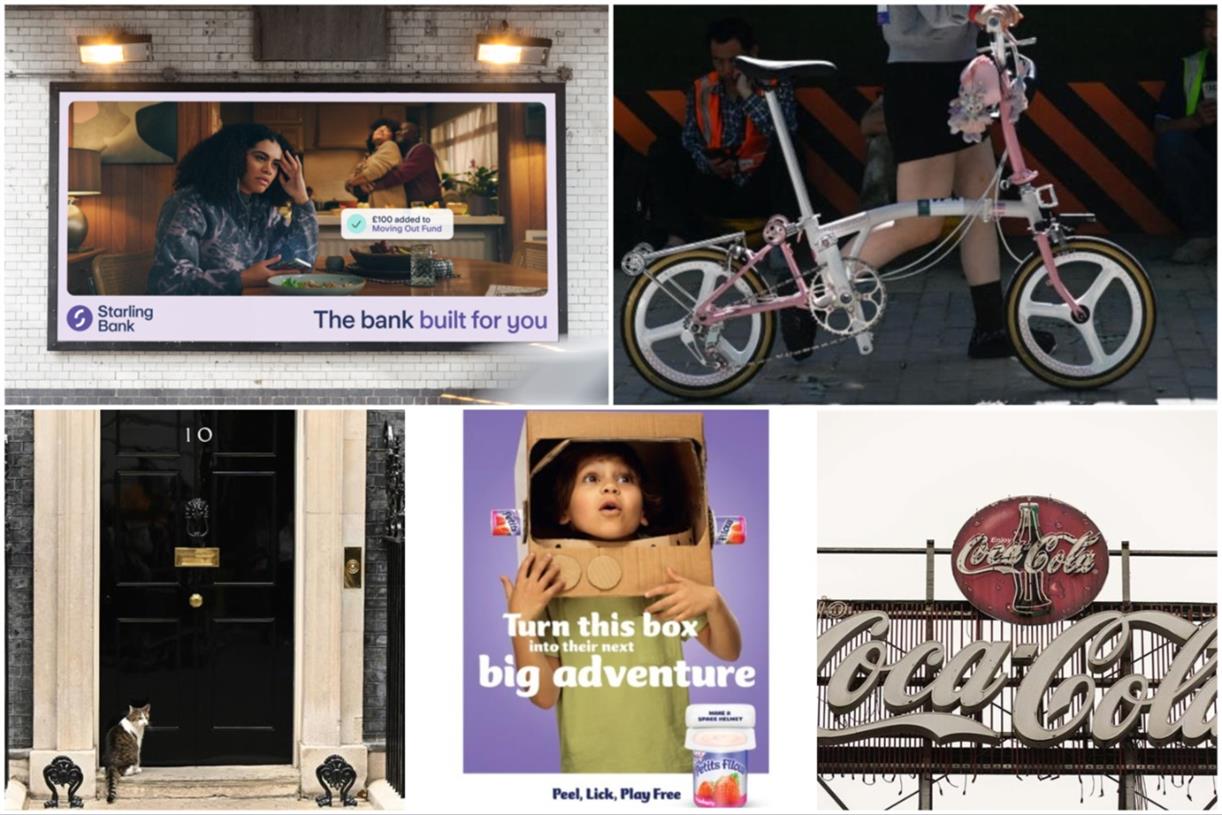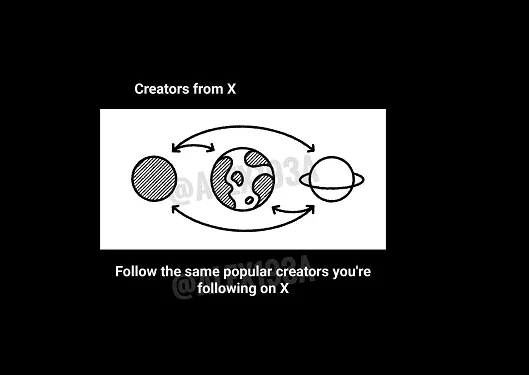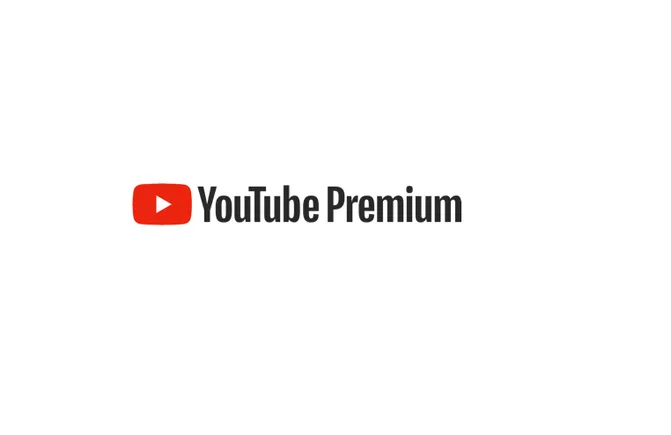How to Start a Blog: A Step-by-Step Guide [+ Free Blog Post Templates]
Industry experts and thought leaders use blogs to share their knowledge with interested parties like you. And, if the post was written well, chances are you came away with helpful insights and a positive opinion about that person and...
![How to Start a Blog: A Step-by-Step Guide [+ Free Blog Post Templates]](https://www.hubspot.com/hubfs/how-to-start-a-blog-2.webp)
Industry experts and thought leaders use blogs to share their knowledge with interested parties like you. And, if the post was written well, chances are you came away with helpful insights and a positive opinion about that person and the brand they represent. Even as multimedia content has taken over the internet, blogs keep playing an important role in sharing ideas, opinions, and business solutions. Blogs represent over one-third of all websites in the world, and over 77% of internet users still read blogs in 2024. Readers crave useful knowledge and advice — your blog can deliver that. With a blog, you and your company can publish insights, thoughts, and stories about any topic. Well-crafted blog posts can boost brand awareness, credibility, conversions, and revenue. And, of course, drive traffic to your website. I’ll cover how to start a blog for your company, offering advice and SEO-friendly templates along the way. Table of Contents A blog post is any article, news piece, or guide that's published in the blog section of a website. A blog post typically covers a specific topic or query, is educational in nature, ranges from 600 to 2,000+ words, and contains other media types such as images, videos, infographics, and interactive charts. Before you type a word, define who you want to read your blog. How? Let’s say your readers are Millennials looking to start a business. You probably don't need to provide them with information about setting up social media — most of them already have that down. However, you may want to advise them on adjusting their social media approach (e.g., from casual to more business-savvy). That kind of tweak delivers what your audience really wants and needs — and makes for more compelling content. Don't have buyer personas yet? Start here: Review popular blogs to understand how their strategy and execution led them to grow in credibility. You’re not trying to copy these elements but rather gain insight into what readers appreciate in a quality blog. Keep these points in mind when reviewing a competitor’s blog: Before you write anything, pick a topic. Your first topic can be fairly general as you find your desired niche in blogging. Stuck on picking a topic? Pro tip: If you need help brainstorming ideas or lack inspiration, use HubSpot’s AI-powered blog topic generator. You’ll get title ideas and outlines based on a brief description or a specific keyword. Why should people listen to you over anybody else? Answering this question will set your blog’s trajectory. Here’s how you can find your unique selling proposition in crowded blogging niches: Get creative with a name that gives readers an idea of what to expect from your blog. Names can also be extremely frustrating. If you need a little help choosing your blog name, consider the following: Pro tip: If you’re extra stuck, a blog name generator or generative AI tool like ChatGPT can help. Check if your chosen name is taken already, as repeating it could lessen your visibility and confuse readers. Your blog’s domain will look like this: www.yourblog.com. The name between the two periods is up to you, as long as this domain name doesn’t yet exist on the internet. Some content management systems (CMS) offer sub-domains as a free service, where your blog lives on the CMS instead of your business's website. For example, it might look like this: yourblog.contentmanagementsystem.com. You could also tie your blog to your primary domain. For instance, if you already own a cooking business at www.yourcompany.com, you might create a blog at: blog.yourcompany.com. This format can boost your blog’s SEO benefits. However, you’ll need to register your sub-domain with a website host. Most website hosting services charge very little to host an original domain. Pro tip: You can connect your custom domain to free hosting with HubSpot’s free CMS or in premium editions of Content Hub. This includes access to built-in security features and a content delivery network (CDN). A CMS is a software application to build and maintain your website without having to code from scratch. HubSpot customers host web content via Content Hub. Another popular CMS option is a self-hosted WordPress website on a hosting site such as WP Engine. Pro tip: You can get started for free with HubSpot’s free blog maker. Our free CMS offers everything you need to get started, including hosting, a visual editor, and hundreds of free and paid themes. Start using HubSpot's Free Blog Making tool to publish blog posts. Customize the appearance of your blog to reflect the theme of your planned content and brand. For example, if you're writing about sustainability and the environment, green is a good color choice. If you already manage a website and are writing the first post for that existing website, ensure the article matches your website in appearance and subject matter. Pay special attention to: Your blog is set up — well done! Now you need content. While the design and layout are fun and functionally necessary, the content is what draws in your readers and keeps them coming back. I’ll go into detail on this point later. A good blog post is interesting and educational. Blogs should answer questions and provide actionable steps to solving a challenge — and do so without putting someone to sleep. For example, your introduction should hook the reader and make them want to continue reading your post. Then, use examples to keep your readers interested in your point of view. Want to learn how to apply blogging and other forms of content marketing to your business? Check out HubSpot Academy's free content marketing course. You’ve solved the technical and practical tidbits of how to start a blog. Now it’s time to write your very first blog post. Blog posts come in many shapes and sizes, each with different formats to follow. Save time and download blog post templates for free. Your topic can be more general to start. If your company sells a CRM for small-to-enterprise businesses, your post might cover using a single software to align your marketing, sales, and service teams. Pro tip: You may not want to jump into a “how-to” article for your first blog post. Why? You have no credibility yet. Before teaching others how to do something, you’ll first want to show you’re a leader in your field and know what you’re talking about. For example, if you’re a plumber writing your first post, don’t start with, “How to Replace the Piping System in your Bathroom.” First, review modern faucet setups or tell a success story you had rescuing a faucet before it flooded a customer's house. Or, try these four other types of blog posts. Struggling with topics? A good topic brainstorming session should help. In the post I’ve linked, my colleague walks you through turning one topic into many. If you’re still stuck, look at the image below for more first blog post idea examples. Also remember to review what you know about your buyer personas and their interests while you're coming up with a topic for your blog post. If you have a portfolio already, pull from those brainstormed post ideas or previous content strategy. One thing that’s helped me is reviewing content performance data when I’m brainstorming ideas. Through this process, I’ve found which topics resonated better with my audience and created content around them. By focusing on your core blog topics, or clusters, you establish yourself as a thought leader, gain your audience’s trust, rank better on search engines, and attract new readers. Find a keyword with low searches in Google (I recommend sticking to about 10 to 150 monthly searches). These topics offer less competition, allowing your new blog post to rank more easily. To find that keyword, begin by identifying your blog’s general topic. For instance, a plumber’s general topic might be “plumbing” (67K monthly searches). Next, put this term into a keyword research tool like: These tools will generate a list of related keywords. Scan the list and choose one with a lower search volume. For this example, we’ll use “under sink plumbing” (1.4K monthly searches). Run that keyword in the keyword research tool again. Look at the related keywords. Find one with a lower search volume. Repeat until you find a keyword in the 10-150 monthly search range. For this example, we’ll settle on “plumbing problems under kitchen sink” (10 monthly searches). That’s the topic for our first post. TL;DR — Choose a low-volume, low-competition keyword that will ensure your first post ranks. For more help on keyword research, try: If someone is looking for “plumbing problems under kitchen sink,” they might be looking for a tutorial, a diagram, an article, or a product that can fix the issue. If they’re looking for the first three, you’re good — a blog post can cover it. A product, however, is different, and your blog post won’t rank. Google the term and look at the results. If other articles and blog posts rank for that term, you’re good. If you only find product pages or listicles from major publications, pick a different topic. Consider the term “under sink plumbing bathroom” (30 monthly searches). It seemed like a perfect fit because it had low monthly searches. Upon Googling the term, I found product carousels, product pages from Home Depot and Lowe’s, and guides written by major publications. TL;DR — Before writing your first blog post about a low-volume topic, double-check the user intent by Googling the keyword. Also see who’s written about that topic so far. If you see a major brand, consider another topic. It’s time to flesh out your topic by covering related or adjacent topics. Use the following tools: You should identify opportunities to fill in gaps within existing discourse on your topic. It’s good to meet a need not already covered in your topic cluster. Otherwise, you risk writing content for over-saturated topics. To discover what’s missing within a topic, I conduct a competitive analysis to see what my competitors offer in their content and how I can make a better blog post. Look for: Competitors slacking in these areas means you benefit by focusing on them in your blog. Your blog title should tell readers what to expect yet leave them wanting to know more. This is why you should brainstorm three to five working titles instead of just one. Share your title ideas with coworkers and see which one they like. Let's take a real post as an example: "How to Choose a Solid Topic for Your Next Blog Post." Appropriate, right? The topic, in this case, was probably “blogging.” The working title may have been something like “The Process for Selecting a Blog Post Topic.” And the final title ended up being “How to Choose a Solid Topic for Your Next Blog Post.” See that evolution from topic, to working title, to final title? Pro tip: Ask ChatGPT to generate sample blog post titles with a prompt like, “Write a list of blog titles about [topic].” I’d caution you about copy/pasting what AI generates; instead, use it as inspiration for your own blog post title ideas. Sometimes, blog posts get information-dense and overwhelm the reader and writer. The trick is to organize the info in an outline to limit content length or density intimidation. Download This Template for Free When outlining, center your main ideas with keyword-rich headers (H2s) and subheaders (H3s). Google relies on your H2s and H3s when indexing and ranking content. For example, let's look at "How to Use Snapchat: A Detailed Look Into HubSpot’s Snapchat Strategy." There’s a lot of content in the piece, so it’s divided into a few sections using descriptive headers. The major sections are separated into subsections that go into more detail while letting readers easily review. You can see how an outline sets up the “scaffolding” to make it easier to fill in details. Remember, your outline should serve as a guide to make writing your blog post easier. Include all the important points you want to discuss and organize them logically. And to make things even easier, you can download and use our free blog post templates. Just fill in the blanks! We've more specifically covered writing captivating introductions, but let's review. Now that you have a detailed outline and solid intro, you're ready to fill in the blanks. Use your outline as a guide and expand on all points as needed. Write about what you already know. Do more research if you need it. Use examples and data to support your points while providing proper attribution. And always try to find accurate and compelling data for your post. This is also where you show your personality. Blog posts don‘t have to be strictly informational. They can burst with interesting anecdotes and even humor if it serves a purpose in expressing your ideas. It also factors into creating and maintaining your blog’s brand voice. And, if you’re struggling to string sentences together, you’re not alone. Finding your “flow” challenges most writers. Luckily, tools exist to help you improve your writing: Also refer to our complete list of tools for improving your writing skills. And for even more direction, try: Writing is great, but editing is where the magic happens. I tend to self-edit while I write, but always get a second pair of eyes on your post before publishing. Consider applying The Ultimate Editing Checklist and ask a grammar-conscious coworker to copy-edit your post. I also love free grammar checkers like Grammarly to proofread while I write. More tips to practice your self-editing skills: There’s much more to a good blog post than the copy. Consider adding these elements to support your ideas. Choose a visually appealing and relevant image for your post. As social networks treat content with images more prominently, visuals drive a key part of successful blog content. For help selecting a featured image, read "How to Select the Perfect Image for Your Next Blog Post" and pay close attention to the section about copyright law. No one likes an unattractive blog post. And it’s not just pictures that make a post visually appealing — formatting and organization matter, too. In a well-formatted and visually appealing blog post, you'll notice that header and sub-headers break up large text blocks. Here's an example of what that looks like: Screenshots should always have a similar, defined border so they don’t appear as if they’re floating in space. That style should stay consistent from post to post. Tags are specific, public-facing keywords describing a post. They also allow readers to browse for more content in the same category on your blog. Refrain from adding a laundry list of tags to each post. Instead, spend time on a blog tagging strategy. Think of tags as “topics” or “categories,” and choose 10-20 consistent tags that represent the main topics you want to cover on your blog. You’ve filled out your blog post with all the optimized content you can. Now’s the time to publish it in your CMS. I also use this step to double-check my post for errors I missed during the proofreading process. It’s also important to preview your post before publishing to check for formatting issues. You can opt to post your content immediately, save it as a draft, or schedule when you want it to post in case you adhere to a posting schedule. A conversion path is a process by which an anonymous website visitor becomes a known lead. It sounds simple enough, but creating an effective conversion path requires a clear understanding of your target audience and their needs. And, when you share your content on the web, you should know what you want your audience to do next. Calls-to-action (CTA) are a part of a webpage, advertisement, or piece of content that encourages the audience to do something. Add them to your blog post to guide your reader with “next steps” on a conversion path. CTAs could ask readers to: To make a CTA that readers want to click, check out our list of effective call-to-action examples. After you finish writing, go back and optimize your post’s on-page elements. Don’t obsess over how many keywords to include. If there are opportunities to incorporate keywords you’re targeting, and it won’t impact reader experience, do it. If you can make your URL shorter and more keyword-friendly, go for it. But don’t cram keywords or shoot for some arbitrary keyword density — Google's smarter than that. Here's a little blog SEO reminder about what to review and optimize: Share your post across all the marketing channels in your arsenal. The further the reach, the greater the chance readers will find it. Start with a promotion strategy. This is your master plan for creating, posting, and engaging with social media content. One quick but effective way to build your online presence is by simply repurposing your blog posts. You can turn a blog post into bite-sized snippets of engaging information to share on socials or into an audio file perfect for audio streaming services. HubSpot’s content marketing tools let you do just that, as well as handle SEO and even record videos and podcasts. Other channels to expand your blog post promotion strategy include: Here are more blog post promotion resources: The whole world can see your blog post. Make sure you can see if your blog post strategy supports your business goals by tracking post performance over time. Keyword research, informative content, and having a promotion strategy in place won’t get you anywhere if you don’t know whether you’re doing it right. Analytics should play a key role in your overall content strategy. Common blog KPIs I like to track are: There are many website traffic analysis tools you can use to better understand your audience’s behavior on your blog posts. For example, you can track a page’s total views and average session duration with HubSpot’s marketing analytics software and gauge whether your target audience found the blog post engaging or informative. Divide your paragraphs into sections to make it easier for the reader to find what they need. If you’re just starting out, then focus on the overarching H2s you want to discuss. You can branch off into sub-headers more naturally as you continue writing. This simple practice helps your content look more professional with little effort. Centering your images keeps the reader’s attention drawn to the subject. Image alt text allows search engines to crawl and rank your blog post better than pages lacking the element. It also leads readers to your blog post if the keywords included match their searches. Besides SERP features, image alt text provides more accessibility to readers. It allows people to better visualize images when they can’t see them. With assistive technology, it can be read aloud for people to enjoy. Don’t feel pressured to elongate your post with unnecessary details. Chances are that if you keep it concise, readers will derive more value from your work. Your reader will enjoy visiting a blog page with images, videos, polls, audio, or slideshows as opposed to a page of black and white text. It also makes for a more interactive blog and improves your on-page SEO. Now, how about real examples of blog posts? List-based posts are sometimes called “listicles,” a mix of “list” and “article.” A listicle uses sub-headers to break down the blog post into individual pieces, helping readers skim and digest your content. As seen in the example from our blog, listicles can offer various tips and methods for solving a problem. Thought leadership posts let you share your expertise and firsthand knowledge on a particular subject matter with your readers. These pieces — which can be written in the first person, like the post shown above — help you build trust with your audience so people take your blog seriously. Curated collections are a special type of listicle blog post. Rather than sharing tips or methods for doing something, this type of blog post shares a list of real examples with something in common in order to prove a larger point. HubSpot Slides is a presentation tool that helps publishers package a lot of information into easily shareable slides. Think of it like a PowerPoint but for the web. With this in mind, presentation-style blog posts help you promote your slides to generate a steady stream of visitors. Slide decks usually rank poorly on search engines. They need a platform for getting their message out to interested users. By embedding and summarizing your slides on a blog post, you can share a great deal of information and give it a chance to rank on Google at the same time. “Newsjacking” is a nickname for “hijacking” your blog to break important news related to your industry. The newsjack post is a type of article whose sole purpose is to catch consumers' attention and prove your blog is a trusted and timely resource for learning about big industry news and trends. The infographic post serves a similar purpose as the slide presentation post, as it conveys information for which plain blog copy might not be the best format. For example, when you want to share statistics without boring or confusing your readers, building this data into a well-designed and engaging infographic can help readers connect with your content. It also helps readers remember the information long after they leave your website. For this example, look no further than this very blog post. How-to guides like this one help solve a problem for your readers. They’re like a cookbook for your industry, walking your audience through a project step by step to improve their subject matter literacy. The more posts like this you create, the more equipped your readers will be to work with you and invest in the services you offer. Guest posts are a way to include other voices on your blog. For example, if you want to get an outside expert's opinion on a topic, a guest post is perfect. Additionally, these posts give your blog variety in topic and viewpoint. If your customer has a problem you can't solve, a guest post offers a great solution. If you begin accepting guest posts, set up editorial guidelines to ensure they meet the same standards as your posts. If you’re feeling stuck as a new writer, don’t give up. It gets easier with practice. Whether you’re struggling with writer's block or want to add depth to your content, here are quick tips I compiled to help elevate your blog writing. Start with what you know. Not only will sharing personal anecdotes help get ideas flowing, but it can also better engage your readers. Stories can simplify complex concepts and make your content more relatable. Plus, they add a human touch and help set the tone for the rest of your blog post. When you back up your ideas with unique, expert quotes or share facts from reliable sources, it shows your blog post is well-researched and trustworthy. If you’re unsure where to find quotes, think through the people you know and their expertise. For example, I’m lucky enough to have incredibly knowledgeable coworkers at HubSpot that I can reach out to if I need a quote. I’ve also reached out to connections on LinkedIn to see if they can provide a quote or know someone who can. Most internet users have a short attention span and tend to skim through content rather than read every word. That’s why I recommend dividing your blog post into smaller chunks to make it more digestible. Use heading and sub-headings, bullet points, and short paragraphs. Breaking up your content makes your blog post more visually appealing and helps readers quickly find the information they’re looking for without falling into a sea of text. Keep it simple. Don’t write overly complex sentences that confuse your readers (and yourself). Instead, convey your message in a simple and accessible manner. I like to use the Hemingway App to make sure my writing doesn’t get too dense. Although your writing should captivate the reader, avoid overwhelming them with fluff. The active voice can keep your writing clear, concise, and energetic while getting your point across. For example, instead of saying something like “the product was loved by customers,” write “customers loved the product.” Blogging can help you build brand awareness, become a thought leader, demonstrate expertise in your industry, attract qualified leads, and boost conversions. Follow my steps and tips to start publishing and enhancing your blog today. Editor's note: This post was originally published in October 2013 and has been updated for comprehensiveness.What is a blog post?
How to Start a Blog
1. Understand your audience.

2. Check out your competition.
3. Determine what topics you’ll cover.
4. Identify your unique angle.
5. Name your blog.
6. Create your blog domain.
Want to create a sub-domain for your blog?
7. Choose a CMS and set up your blog.
8. Customize your blog’s appearance.
9. Write your first blog post.
What makes a good blog post?
How to Write Your First Blog Post: Getting Started
1. Choose what type of blog post you’re writing.
2. Choose a topic you and your audience both care about.

3. Pull from your content strategy and/or brainstormed topics.
4. Target a low-volume keyword for optimization.
5. Google the term to understand your audience’s search intent.
How do you double-check search intent?
6. Find questions, terms, and potential gaps related to that topic.
7. Generate 3-5 working titles and choose the best one.
8. Create an outline.
9. Write an intro (and make it captivating).
10. Start writing your blog post.
11. Proofread your post.
12. Add images and other media elements to support your ideas.
Featured Image

Visual Appearance

Topics and Tags
13. Upload your post into your CMS.
14. Determine a conversion path (what you want your audience to do next).
15. Add calls-to-action to guide your audience to take action.
16. Optimize for on-page SEO.
17. Publish and promote your first post any way you can.
18. Track your blog post’s performance over time.

Blog Format Guidelines
1. Include H2s to arrange ideas.
2. Center your images.
3. Add alt text.
4. Keep your sentences short and concise.
5. Use media with a purpose.
Blog Post Examples
1. List-Based Post Example

2. Thought Leadership Post

3. Curated Collection Post

4. Slide Presentation Post

5. Newsjacking Post

6. Infographic Post

7. How-to Post
8. Guest Post

Quick Blog Writing Tips
Tip #1: If you don’t know where to start, start by telling a story.
Tip #2: Include interesting quotes or facts that emphasize the subject.
Tip #3: Make your content skimmable with digestible chunks.
Tip #4: Each sentence should convey a single idea.
Tip #5: Use the active voice.
Ready to blog?

 UsenB
UsenB 














![Cultural Marketing: What It Is & How to Do It The Right Way [According to Experts]](https://www.hubspot.com/hubfs/Untitled%20design%20-%202025-04-03T163531.949.jpg)



















